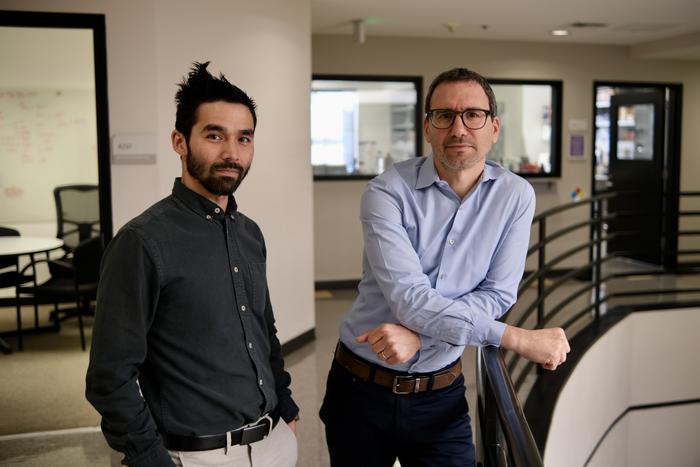The intricacies of cellular architecture reveal an extraordinary depth of organization within the nucleus, the central hub safeguarding the genetic essence that dictates the biological mechanisms of life. In recent research conducted by a team from the Sanford Burnham Prebys Medical Discovery Institute, significant advances have been made in understanding how cellular gateways, known as nuclear pore complexes (NPCs), regulate accessibility to this vital genetic material. The study, published in Cell Reports on March 31, 2025, not only elucidates the production of these critical structures but also highlights their implications in various diseases, including cancer and neurodegenerative conditions.
Nuclear pore complexes serve a fundamental role in cellular function as they facilitate the transport of molecules in and out of the nucleus, much like busy crossroads managing the flow of traffic. The study uncovers that these complexes are not static structures; instead, they dynamically adjust their quantities in response to cellular demands. Just as a retail store may adjust its checkout lines based on customer traffic, cells can manipulate the assembly of NPCs according to their operational needs. This capacity for adjustment has been observed across multiple cell types and under varying developmental and environmental contexts, pointing to an intricate system of cellular regulation.
Dr. Maximiliano D’Angelo, a primary investigator in the study, states the pressing need to delve into the mechanisms controlling NPC assembly. While the significance of these complexes in maintaining cellular health is well-recognized, the underlying biological processes that regulate their production remain largely elusive. D’Angelo’s research team, through a comprehensive exploration of the human genome, sought to identify the factors influencing NPC assembly. Their quest ultimately aims to pave the way for innovative therapeutic strategies by enhancing our understanding of how cells control these gateways to the genome.
The researchers discovered that the modulation of NPCs is influenced by a delicate balance between protein synthesis, or translation, and protein degradation, akin to the roles of producers and recyclers in a systemic workflow. The research highlights that proteins vital for the formation of NPCs and those responsible for managing their degradation often belong to opposing cellular factions. This intriguing dynamic offers a new lens through which to view cellular health, especially in the context of diseases characterized by rapid cell proliferation, such as cancer, where NPC regulation could severely impact disease progression.
One of the crucial findings of the study reveals the involvement of a specific protein complex known as the CCR4-NOT complex. This assembly is instrumental in the regulation of messenger RNA (mRNA), which serves as the template for protein translation. By influencing mRNA levels, the CCR4-NOT complex effectively shapes the availability of nucleoporins—proteins that are key building blocks of NPCs—thereby determining the number of nuclear pores constructed. The ability to modulate NPC numbers via manipulation of translation or degradation pathways illustrates a possible avenue for therapeutic intervention, particularly in conditions where NPC levels are aberrant.
As the research team further investigates these regulatory players, they are also probing additional genomic factors identified during the screening process. The goal is to fine-tune NPC levels, potentially unveiling small molecules capable of either enhancing or inhibiting NPC function. This line of inquiry is particularly compelling as it may lead to novel cancer treatments aimed at reducing NPC assembly in tumors, while also considering approaches to reinstate NPC function in neurodegenerative diseases where it has diminished.
Notably, the implications of this research extend beyond immediate disease contexts. The intricate relationships between protein synthesis, degradation, and NPC formation reflect broader principles of cellular homeostasis. Understanding these principles may illuminate new insights into cellular resilience and adaptability, revealing how cells maintain balance in the face of external stressors or pathological changes.
The study provides a detailed insight into the assembly of nuclear pore complexes, emphasizing their regulatory mechanisms. By deftly employing genome-wide screening methodologies, the researchers have pieced together a comprehensive map of factors involved in NPC biogenesis. This achievement not only advances fundamental biological knowledge but may also inspire innovation in therapeutic design aimed at diseases characterized by dysregulated nucleocytoplasmic transport.
As the team continues their exploration, Dr. D’Angelo expresses a clear vision for potential future applications. “Our previous work indicated that reducing the number of NPCs could be a promising approach for treating certain cancers, and we’re actively developing strategies for that purpose,” he shares. Furthermore, they are investigating methods to boost NPC function in compromised neural cells suffering from neurodegenerative conditions such as dementia. Such strategies could transform how we approach therapeutic development for these complex diseases.
Collectively, the findings of this research underscore the era of precision medicine, where understanding the nuanced regulation of cellular components could lead to tailored treatments. The intricate dance between protein synthesis and degradation mirrors the complexities of life itself, highlighting the profound interconnectivity of cellular functions. As scientists continue to unravel these complexities, the potential rewards—whether in cancer therapy or neurodegeneration—remain vast and promising.
In sum, the research conducted by D’Angelo and his colleagues demonstrates that the regulation of nuclear pore complexes is a sophisticated and dynamic process. Their innovative approach reveals vital mechanisms that not only enrich our understanding of cellular behaviors but also open new vistas for therapeutic interventions. This pioneering work promises to contribute profoundly to both biomedical research and clinical applications in the years to come.
Subject of Research: Cells
Article Title: Homeostatic Regulation of Nucleoporins is a Central Driver of Nuclear Pore Biogenesis
News Publication Date: 31-Mar-2025
Web References: 10.1016/j.celrep.2025.115468
References: Not provided
Image Credits: Credit: Sanford Burnham Prebys
Keywords: Nuclear pores, Nuclear proteins, Cellular proteins, Discovery research, Nuclear genomes, Genome complexity, Protein complexes, Neurodegenerative diseases, Human genomes, Cancer genomics, Genome wide association studies.




